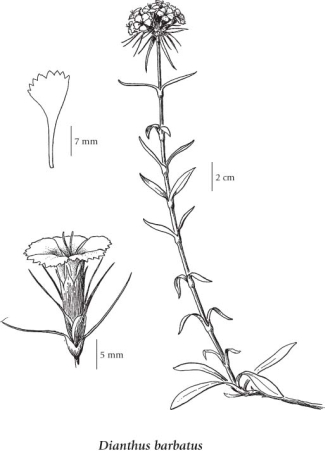E-Flora BC: Electronic Atlas of the Flora of British Columbia
Dianthus barbatus L.
sweet William (sweetwilliam) Caryophyllaceae (Pink family) Introduction to Vascular Plants
|
||||||||||||||||
